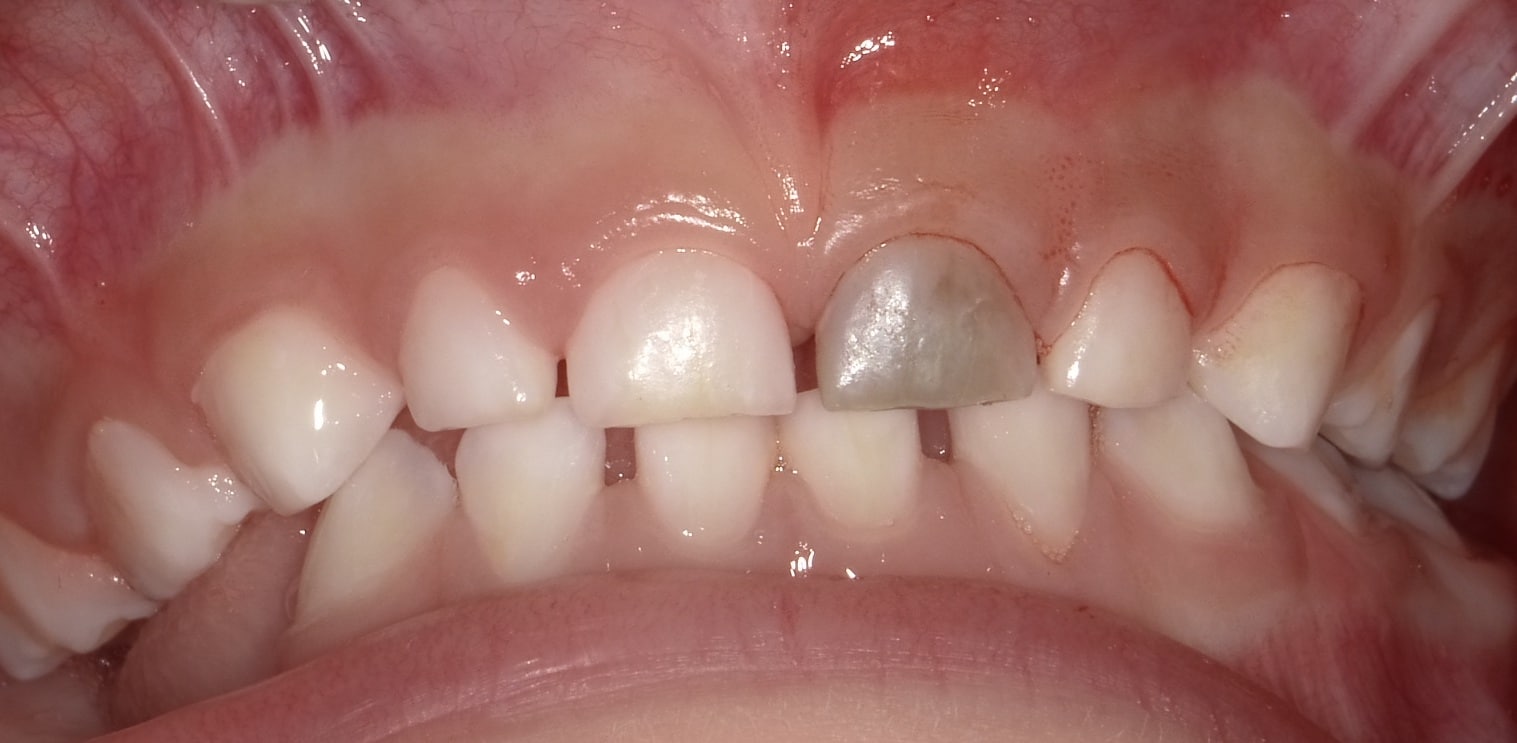For children, aged 0-6 years, oral injuries account for about 20% of all physical injuries. Unintentional falls, collisions, and everyday activities are the most common reasons for Traumatic Dental Injuries, especially as your child is learning to crawl, walk, and run.
Most Common Finding:
Discoloration is a common complication following traumatic injuries occurs about 50% of the time. This discoloration may fade, and the tooth may regain its original shade over a period of weeks or months but it is impossible to know if or when it will occur.
Teeth with persistent dark discoloration may remain asymptomatic clinically and radiographically normal, or they may develop an abscess over time roughly 5%.

We can discuss if treatment to lighten the color of the primary incisor is right for your child.
What to Expect at the Dentist:
Depending on the age of your child and presentation of the trauma we exam your child, palpating the area and seeing if the tooth mobile. We will most likely take a base-line x-ray to rule out a possible fracture or impingement of upon the developing permanent tooth. However each case is uniquely different and we will discuss possible treatments at their visit.
Long Term Effects?
There is a close relationship between the apex of the primary tooth root and the underlying permanent tooth germ. Tooth malformation, impacted teeth, and eruption disturbances in the developing permanent dentition are some of the consequences that can occur following injuries to primary teeth.
The most significant traumas such as intrusion where the tooth is displaced into the gum and avulsion injuries where the tooth is completely knocked out of the socket are the most commonly associated with the development of anomalies in the permanent dentition, but these are rare situations.
Home-care:
Successful healing following an injury to the teeth and oral tissue depends on good oral hygiene. Make sure you are cleaning the area with a soft toothbrush. Also to encourage healing use a cotton swab with alcohol-free chlorhexidine or Listerine topically twice a day for one week to prevent accumulation of plaque and debris and to reduce the bacterial load.
Care should be taken when eating not to further traumatize the injured teeth so a softer diet for 7-10 days is encouraged.
Complications
Swelling, increased mobility, or an abscess can unfortunately occur. Your child may not complain about pain, but infection may be present. Signs of infection such as swelling of the gums or increased mobility of the tooth are cause for concern. As always feel free to call us at 215-860-9808 if you have any questions or concerns.

Dr. Ross Levine is a board certified pediatric dentist and has been honored by both
The Bucks County Courier Times and Philadelphia Magazine as a
Top Pediatric Dentist in Bucks County.


